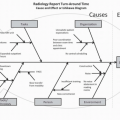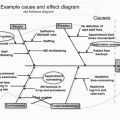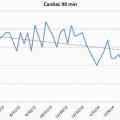Evidence-Based Radiology
Jeffrey P. Kanne
LEARNING OBJECTIVES
1. Define evidence-based health care and its principles
2. List agencies involved in evidence-based health care
3. Describe the American College of Radiology Appropriateness Criteria
Evidence-based health care (EBHC), also termed evidence-based medicine (EBM), has become a central component to health-care reform. Radiology has lagged behind other medical specialties with respect to EBHC, primarily as a result of the rapid growth in imaging technology.
WHAT IS EBHC?
EBHC can be defined as “the systematic application of the best evidence to evaluate the available options and decision making in clinical management and policy settings.”1 EBHC can be used in any clinical situation where uncertainty exists with diagnosis, intervention, or management. While the philosophies of EBHC predate the era of “modern medicine,” the creation of EBHC as a discipline comes from work done by a group at McMaster University (Hamilton, Ontario, Canada) led by Dr. Gordon Guyatt.2,3
PRINCIPLES OF EBHC
In contrast to traditional guidelines and recommendations, which were based primarily on “expert” opinion, EBHC follows a strict, transparent, reproducible methodology.1 Publications are classified by type (e.g., diagnosis, treatment, guidelines). Objective assessment of published literature relies on explicit criteria, and standardized questions are used to assess study methodology and determine validity of reported data. Standard calculations are then used to determine the strength of the results.4
In addition to the rigorous process of evaluating published data, EBHC also aims to provide health-care practitioners with the skills and tools needed to perform their own assessments of published data and guidelines and integrate these assessments into the care of individual patients in a given practice.1
TERMINOLOGY
Efficacy is defined as “the probability of benefit to individuals in a defined population from a medical technology applied for a given problem under ideal conditions.” In contrast, effectiveness is defined as the “performance of a medical technology under ordinary, rather than ideal conditions.”5 Efficiency focuses on the cost-effectiveness of the medical technology.1
EVIDENCE-BASED RADIOLOGY
Evidence-based radiology (EBR) is simply the use of EBHC principles in both interventional and diagnostic radiology. One strong feature of EBR is that it can be used by radiologists in their own practices where imaging and image-guided procedures are performed under ordinary conditions rather than the more regimented conditions often associated with clinical trials,1 reflecting the effectiveness level.5
AGENCIES
Agency for Healthcare Research and Quality
The U.S. Agency for Healthcare Research and Quality (AHRQ), part of the Department of Health and Human Services, defines its mission “to produce evidence to make health care safer, higher quality, more accessible, equitable, and affordable, and to work within the U.S. Department of Health and Human Services and with other partners to make sure that the evidence is understood and used.”6 AHRQ provides data and funding to aid centers across North America to generate evidence reports and assessments of technology and to support guideline development by other groups and organizations.
The United States Preventive Services Task Force
The U.S. Preventive Services Task Force (USPSTF) was formed in 1994 as an independent group of experts in EBM and prevention who volunteer their time and expertise to make evidence-based recommendations to primary care providers about preventive health-care services. Members come from the primary care fields, and most have clinical practices. Recently, the USPSTF gave a grade B recommendation to screening for lung cancer with low-dose computed tomography.7 A grade B recommendation is defined
as “The USPSTF recommends the service. There is high certainty that the net benefit is moderate or there is moderate certainty that the net benefit is moderate to substantial.”8
as “The USPSTF recommends the service. There is high certainty that the net benefit is moderate or there is moderate certainty that the net benefit is moderate to substantial.”8
Stay updated, free articles. Join our Telegram channel

Full access? Get Clinical Tree








